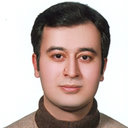Antifungal activities of Astragalus verus Olivier. against Trichophyton verrucosum on in vitro and in vivo guinea pig model of dermatophytosis.
Keywords
Abstract
Astragalus verus Olivier, Fabaceae has been used against ringworm in Kurdish ethnomedicine throughout millennia. The objective of this study was to evaluate the effects of A. verus extracts against Trichophyton verrucosum on in vitro and in vivo guinea pig model of dermatophytosis. The skin of albino guinea pigs was infected with T. verrucosum (1.0×10(7) conidia) and animals were divided into five groups (n=5 for each): negative control (NC), received a vehicle; positive control (PC), received topical terbinafine 1.0% and three other groups: AE10%, AE20% and AE40% which received topical 10%, 20% and 40% aqueous extract of A. verus, respectively. Evaluation of clinical efficacy was performed 72h after completion of a 7-day treatment regimen. Higher significant antifungal activities were observed in aqueous extract in the concentration 320 mg ml(-1) compared with acetone and methanol extracts. The aqueous extract showed minimum inhibitory concentration at 160 mg ml(-1) . Lower clinical scores indicate improved efficacy compared with NC. The lesion scores significantly declined in AE20%, AE40% and PC groups in comparison with NC group. The lesion scores in AE10% and AE20% groups were significantly higher than that of PC group. The AE10% group (18.3%) and AE20% group (39.43%) and AE40% group (66.19%) showed clinical efficacies compared with PC group (76.05%). In conclusion, aqueous extract showed promising antidermatophytic activity.


